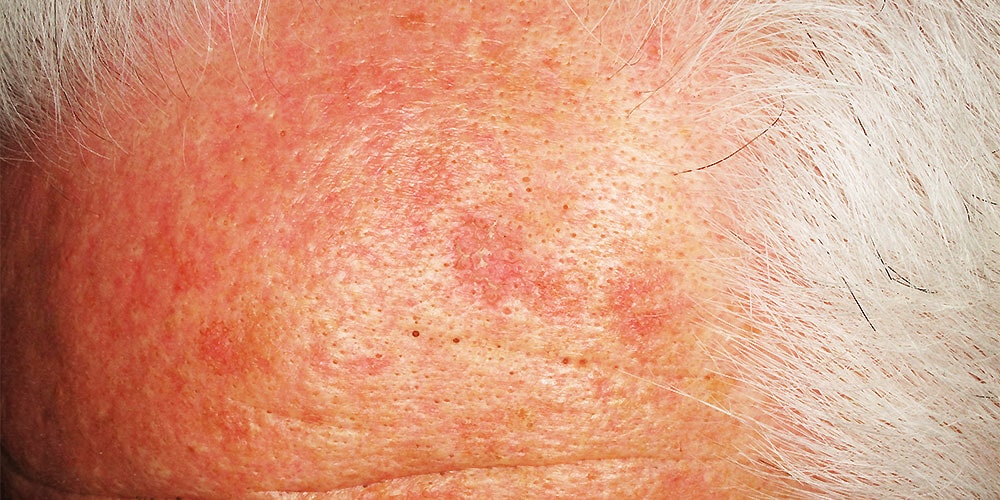What is Actinic Keratosis?
The rough, scaly lesions on the sun-damaged skin are called actinic (hyper)keratoses. Actinic keratosis is also known as solar keratosis. It should be distinguished from other types of keratoses (scaly lesions), such as seborrhoeic keratosis and capillary keratosis.
Actinic Keratosis is actually the abnormal growth of skin cells due to ultraviolet radiation exposure. They are considered precancerous lesions, or an early form of squamous cell carcinoma.
They appear as multiple flat or solid scaly lesions or acrochordon-like red cutaneous lesions. A hyperkeratosis may progress to cutaneous horn.
Actinic Keratosis is very common in areas that are repeatedly exposed to the sun, especially at the back of the hands and the face, frequently affecting the nose, cheeks, upper lip, temples and forehead. On the lips, actinic keratosis is called actinic or solar cheilitis. It is quite common in persons with fair skin or those who have been working outdoors for extended periods without sunscreen. Sun-damaged skin is also dry, discoloured, and wrinkled.
and the face, frequently affecting the nose, cheeks, upper lip, temples and forehead. On the lips, actinic keratosis is called actinic or solar cheilitis. It is quite common in persons with fair skin or those who have been working outdoors for extended periods without sunscreen. Sun-damaged skin is also dry, discoloured, and wrinkled.
Are actinic keratosis dangerous?
Actinic keratosis themselves are harmless, but they can be uncomfortable and unsightly.
The main concern is that actinic keratosis may cause a type of skin cancer known as squamous cell carcinoma. The risk of squamous cell cancer is between 10% and 15% in a patient with more than ten actinic keratosis.
People with actinic keratosis should visit their dermatologist regularly and be examined, due to the risk of developing basal cell carcinoma and malignant melanoma.
Treatment for Actinic Keratosis
Treatment of an actinic keratosis requires removal of the defective skin cells. New skin then forms from deeper cells which have escaped sun damage.
It is not practical to remove all keratoses in those with very extensive sun damage; in such cases it is important to get rid of thickened or tender lesions as these are the ones at greatest risk of progressing to skin cancer
Treatments may include:
- Cryotherapy, i.e. freezing with liquid nitrogen, after which the lesion may blister and then fall off.
- Cautery with surgical CO2 Laser. Selective cautery of the actinic keratosis, leaving the surrounding healthy skin intact.
- Curettage and Cautery may be preferred with thicker keratoses, and is a common method of removing early squamous cell cancers.
- Excision, cutting the lesion out (excision biopsy). This procedure is used to completely remove the lesion and then a specimen is sent for pathological examination.
- Ingenol Mebutate cream, treatment that is applied in a short period of time – 3 days. Effective treatment in patients with many actinic keratosis – field treatment.
- 5-Fluorouracil (5-FU) cream. Useful in patients with many actinic keratosis on the face.
- Imiquimod κρέμα, τροποποιητική ουσία της ανοσοαπόκρισης σε περιοχές με πολλές ακτινικές υπερκερατώσεις – θεραπεία πεδίου.
- Photodynamic therapy (PDT) involves applying a photosensitizing medical substance (5-ALA) to the affected area with actinic keratosis prior to exposing it to an artificial source of visible light at the medical office or to the sun light according to the doctor’s recommendations.


